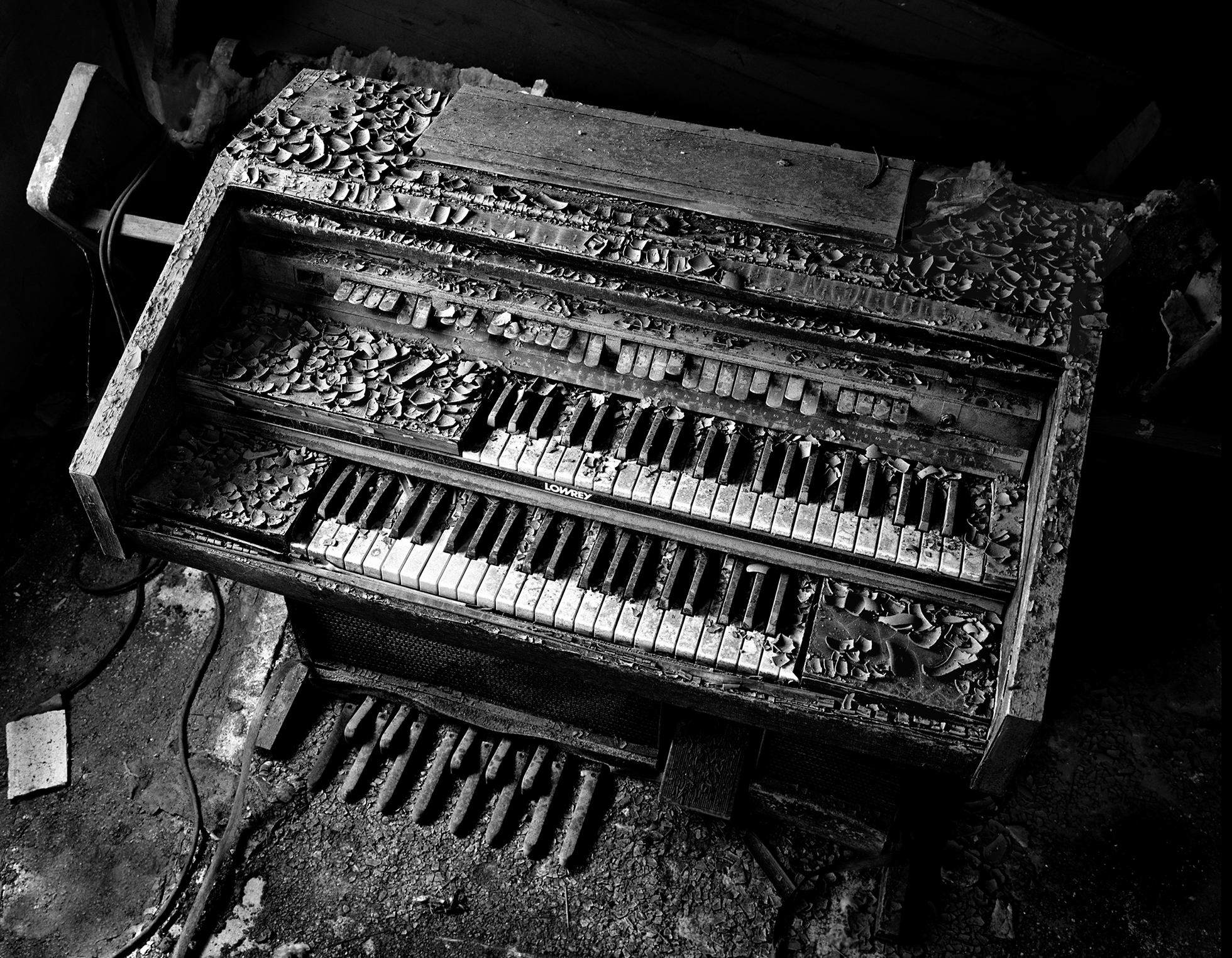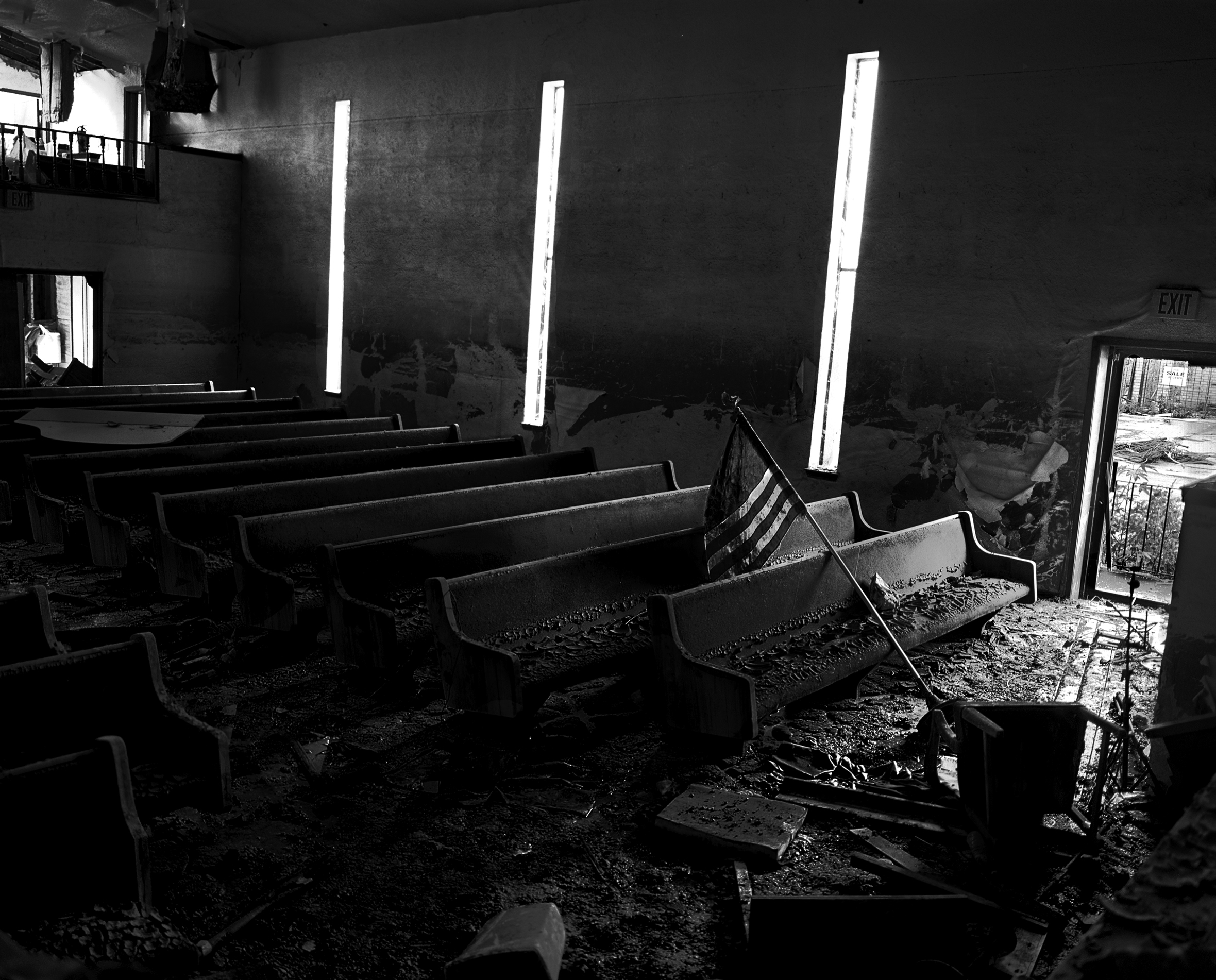I drove into New Orleans’ Ninth Ward a year and a half after Hurricane Katrina had left it in ruins. Friends who had been there had told me the devastation was “unbelievable.” I wondered what that meant — unbelievable.
My friends were wrong. The Ninth Ward, in its ruin, was believable, but only in the way certain dreams are believable — post–World War III dreams: Miles and miles of empty houses. No voices, no cars. An eerie silence except for the distant rumble of dump trucks, the occasional crunching of wood. Now and then a darkened limo, or a Katrina tour bus, would drive through. The initial gold rush of documentary photographers — pointing their cameras at overturned houses, cars in trees, and mountains of debris — was over. Dramatic spectacle had given way to pervasive loss, a condition far less tangible, and more difficult to photograph. I’m not sure what I felt about what I saw. Disbelief? To be honest, I wasn’t able to grasp the disaster. It was too large to be comprehended, especially by someone who didn’t live there.
Calendar, Louis Armstrong School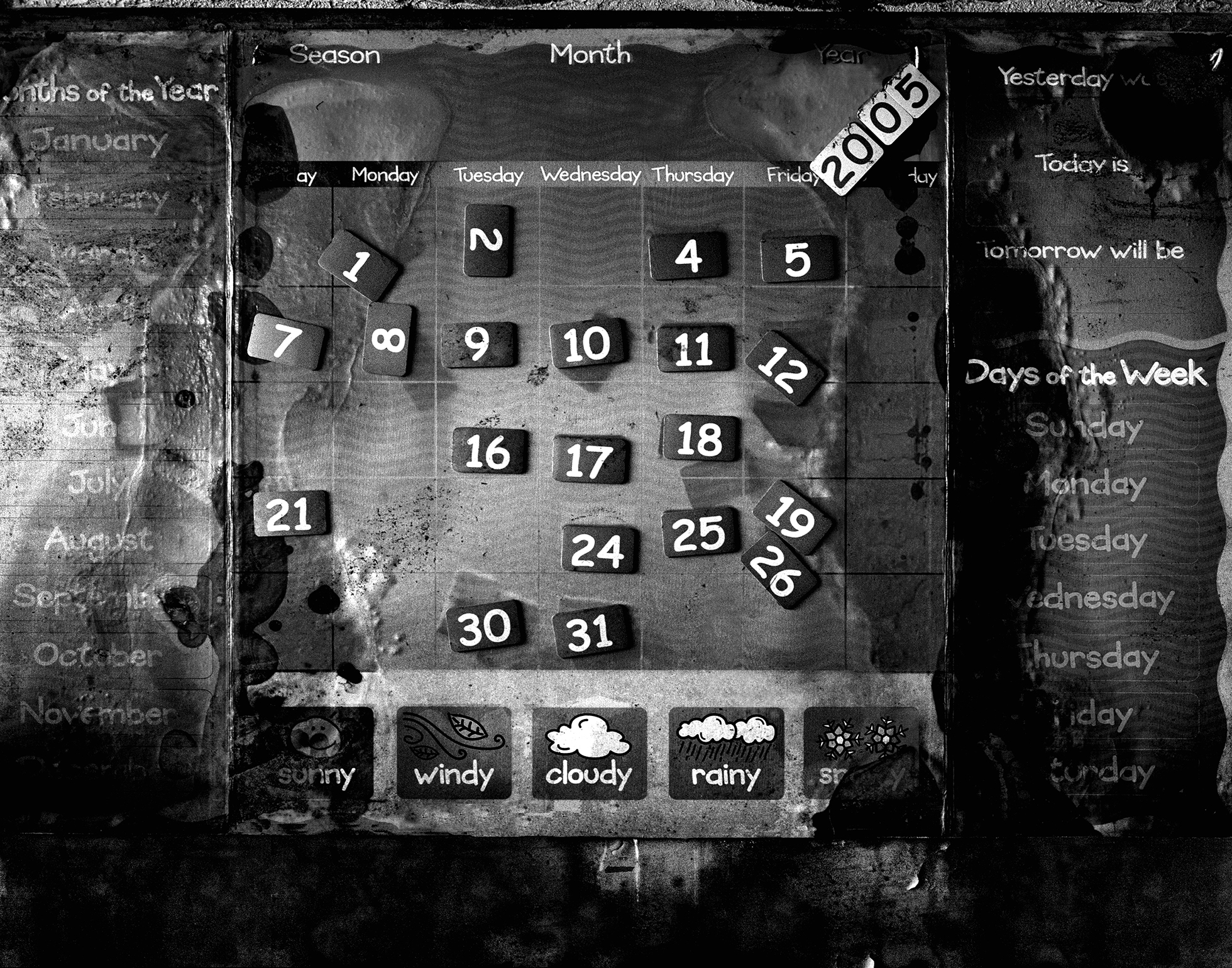
And then, despite my original intentions not to, I began to take photographs — photographs that reminded me why I’d become a photographer. In the early 1970s I would walk around New York City for days (as I imagined Cartier-Bresson had walked around Paris) searching for things to photograph: a person, a dog, a store window, a movie marquee, anything that might open up and reveal an idea about life in the city. One afternoon, as I watched a wrecking ball punch holes in a building I had admired only a week before, the thought crossed my mind that whole sections of New York — particularly the parts with a distinct cultural identity — were beginning to disappear. This image of the disappearing city stayed with me, and I began to photograph everything I considered imperiled: seltzer bottles stacked high in old wooden crates; Ukrainian men playing backgammon in Tompkins Square; a three-masted model of a ship in the dusty window of an Italian seamen’s club in Little Italy. I’m glad I took those photographs. The parts of the city I intended to fix in memory have largely disappeared. And since that time, more than thirty years ago, the desire to memorialize loss has served as the wellspring of my work.
Trophy Room, Louis Armstrong School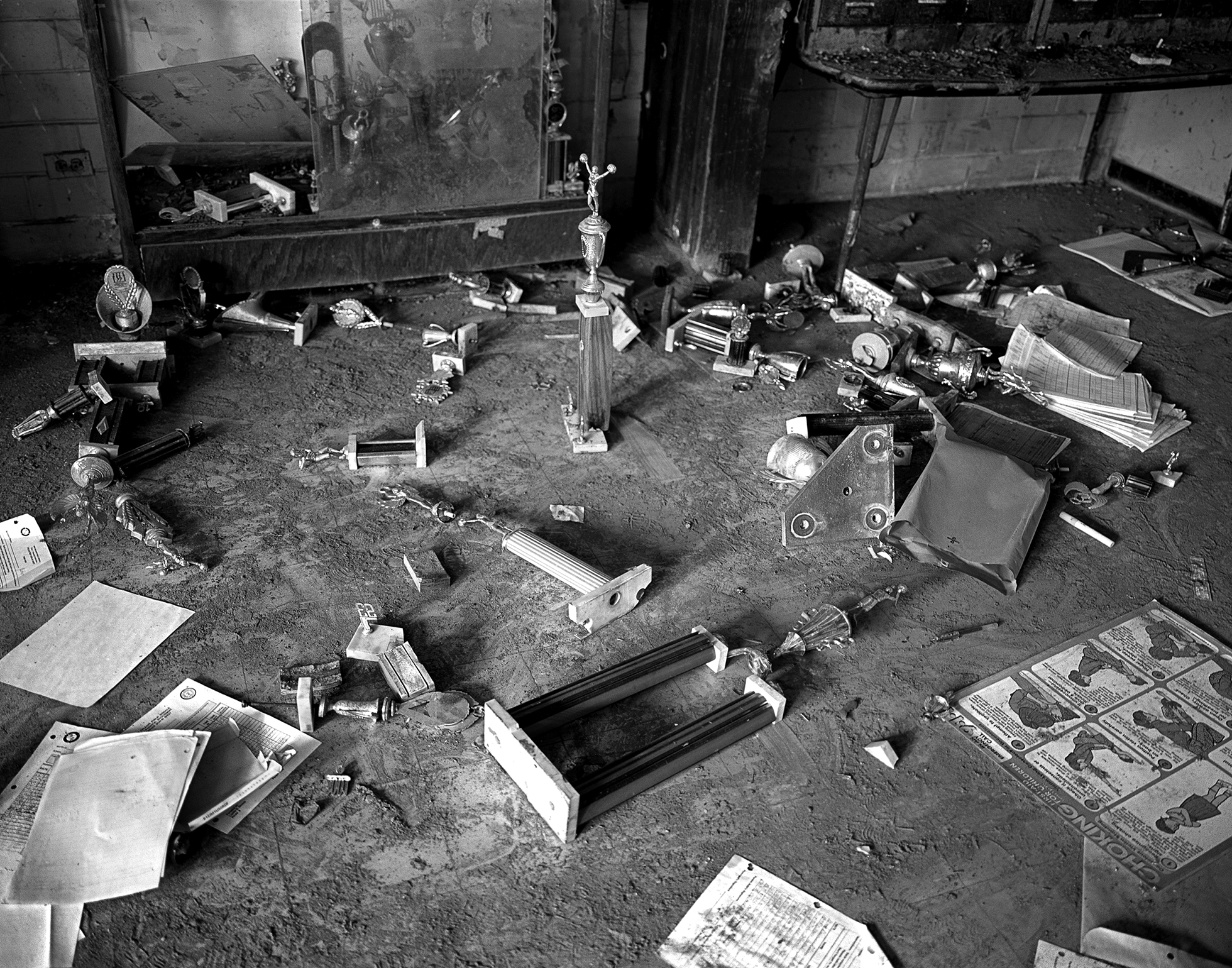
Forstall Street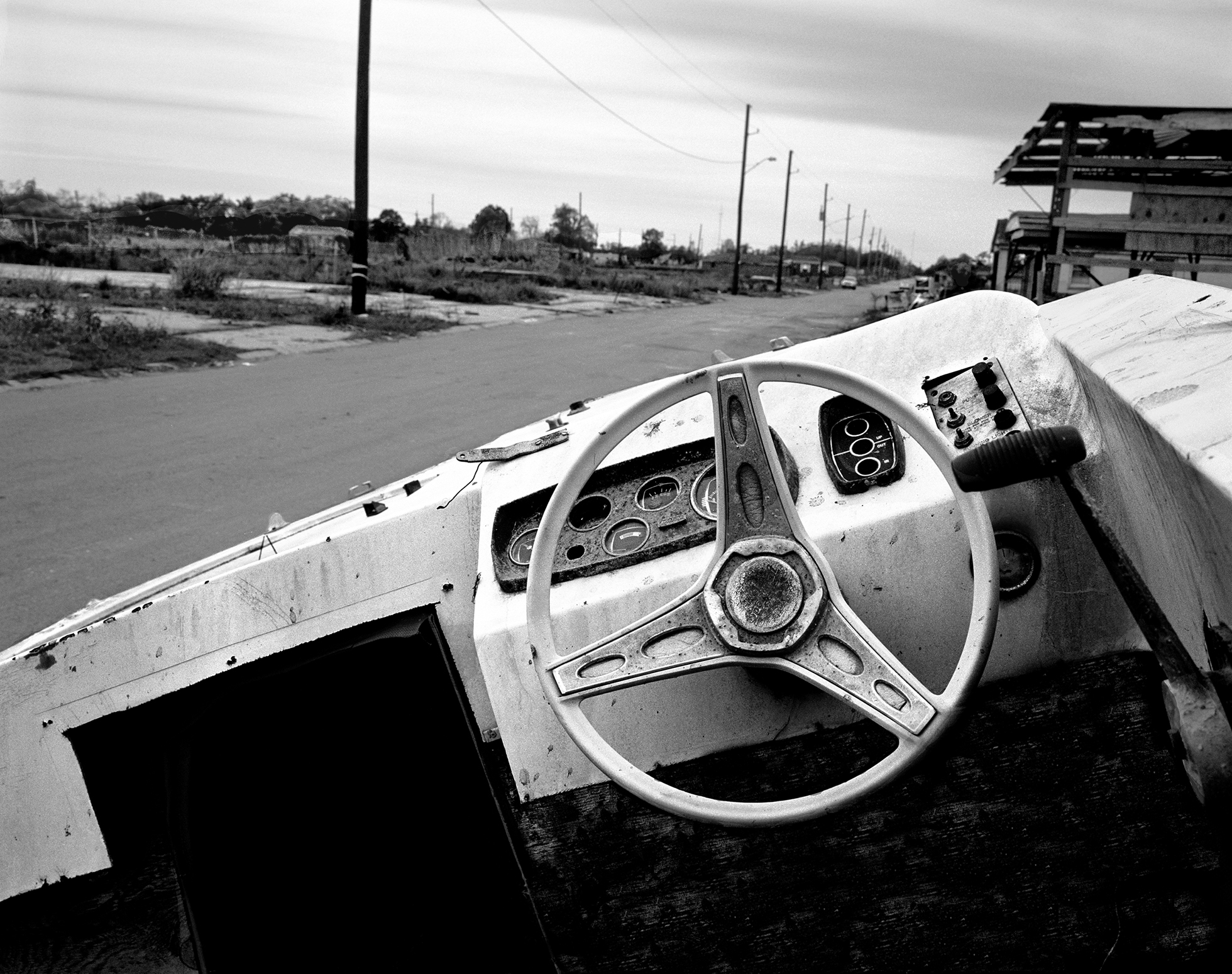
By the time I arrived in the Ninth Ward in the winter of 2007, a large part of the neighborhood had already disappeared, and the rest was in danger of being hauled away. I began to photograph those things that still remained: wrought-iron railings; a church organ covered in cracked silt; a Sunday-school bulletin board full of pushpins. I wanted the photographs to say, See, this was here, and that was there. For a photographer, that seemed a simple enough and legitimate task. The moment we allow ourselves to forget the intimate details of a Somewhere, Donald Trump and his ilk, waiting in the wings, will happily make an entrance and build us a new and improved Nowhere — monolithic, impersonal, luxurious, and white. The Ninth Ward was disappearing, it seemed to me, not only because of Katrina, but because of a long-standing indifference to poor African Americans, an indifference now transforming itself into a mercilessly strategic land grab.
Reception Hall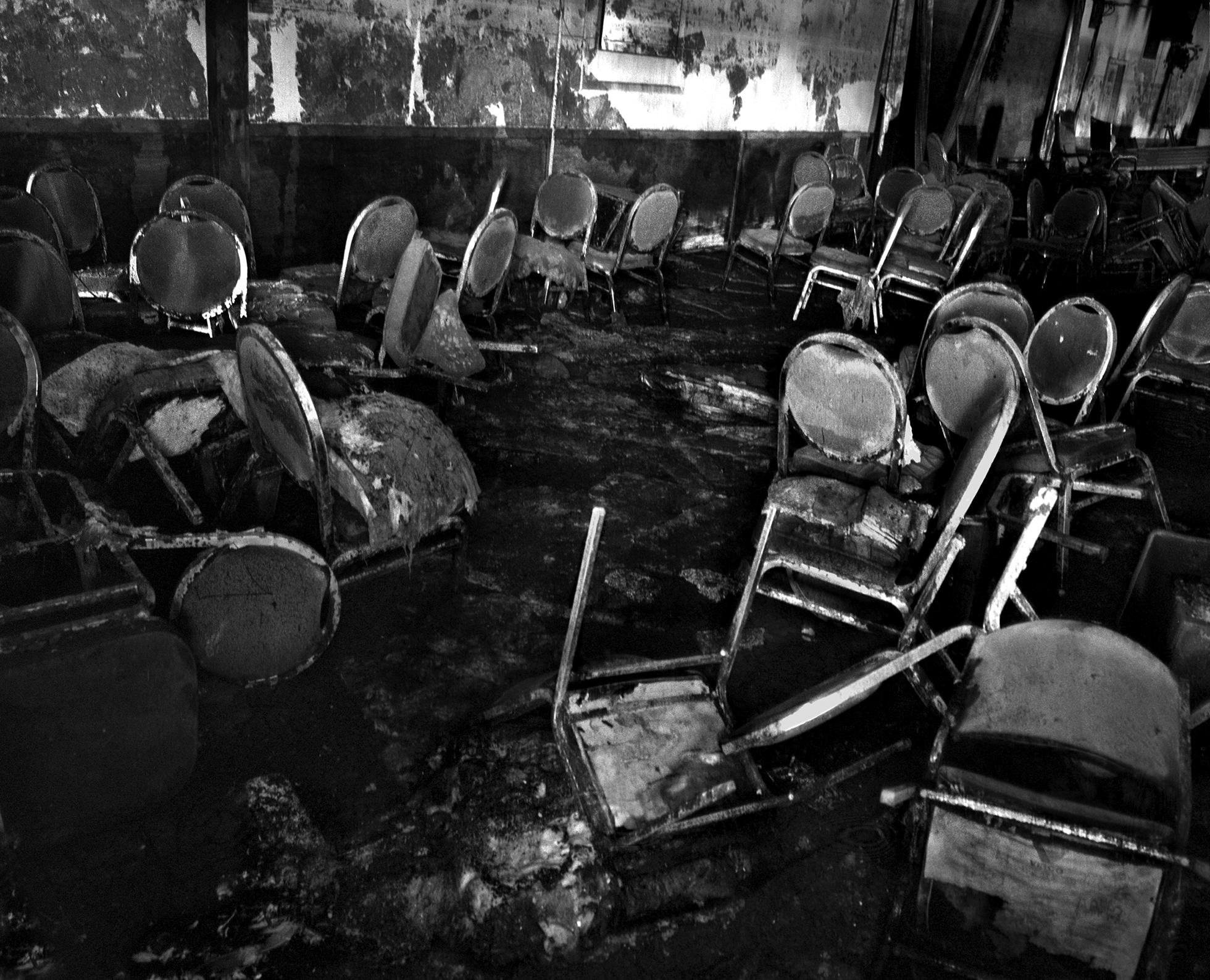
Photographs not only remember; they register surprise. And what surprised me most about the Ninth Ward were the leftover particulars of a multilayered human geography. What had I expected to find there? The media invariably headline poverty and crime, but those words, chanted like a mantra, don’t reveal or illuminate anything; they merely divert us from the deeper problem of American racism. In fact, what I found weren’t simply the remnants of a dilapidated and dangerous neighborhood now demolished by a hurricane, but the vestiges of a working-class community in which aspiration contended with scarcity, and where religious faith found expression on every block. What was left was the vanishing common ground, and it is this familiar terrain that I have photographed.
Shotgun House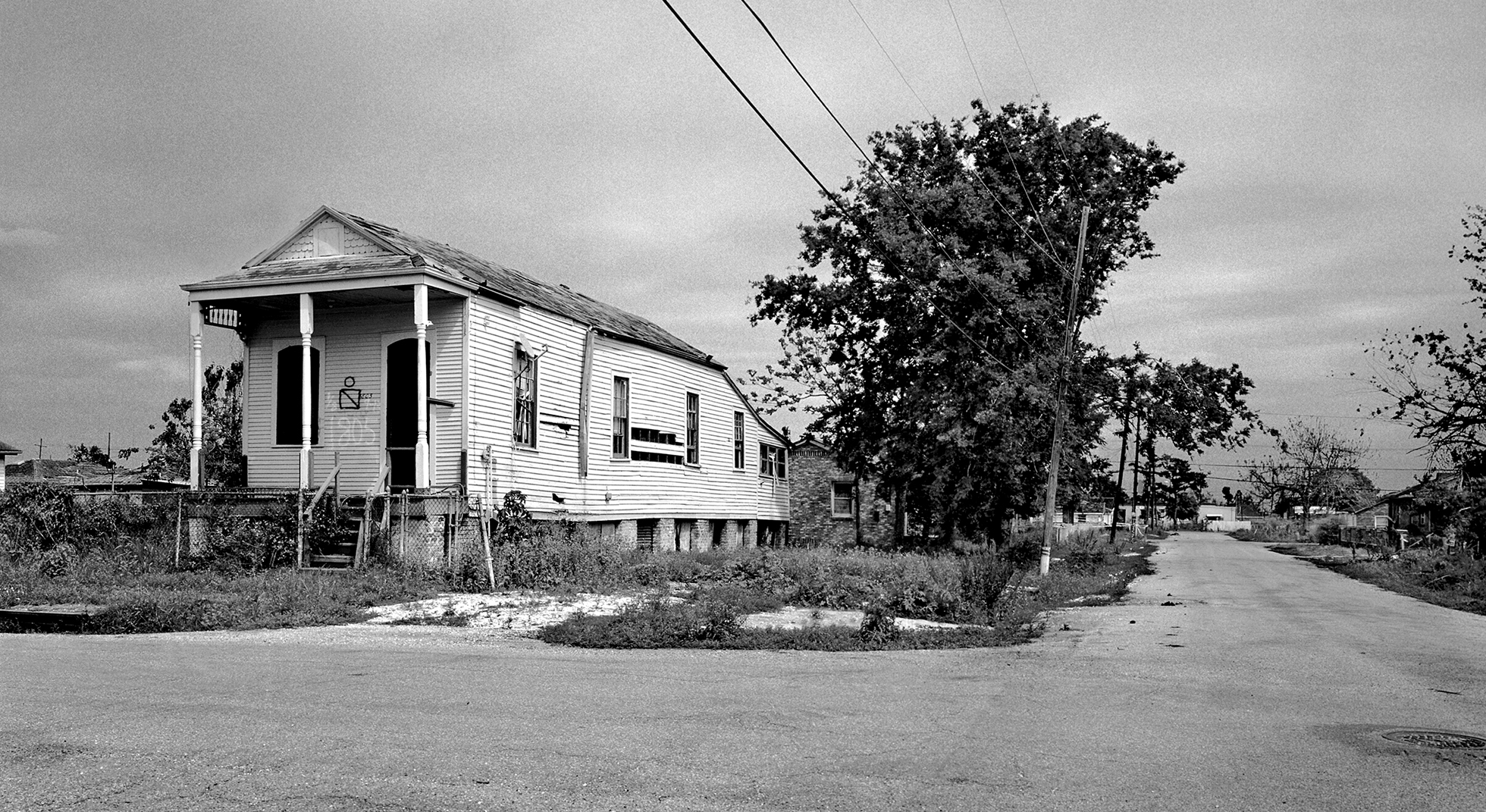
Church of Living God